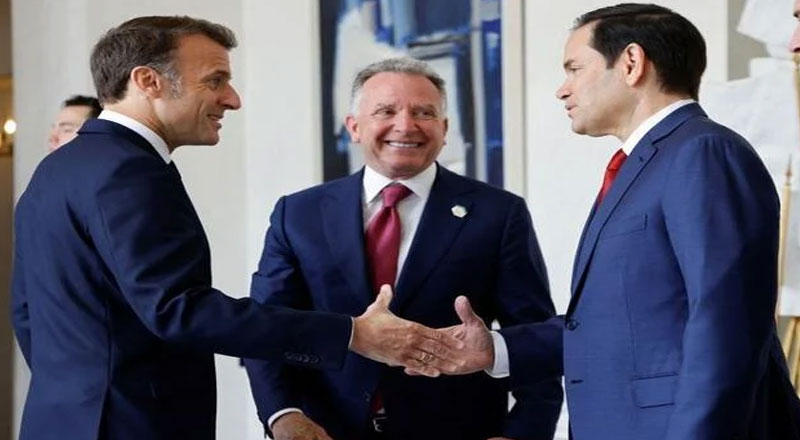A War That Shook Europe—and the World
Since Russia’s full-scale invasion of Ukraine in February 2022, the war has reshaped the geopolitical landscape, devastated economies, and caused an untold human toll. What began as a territorial conflict quickly spiraled into a broader standoff between Russia and the West, with Ukraine becoming the front line of a clash over sovereignty, democracy, and global power dynamics.
The economic fallout has been severe. Global food and energy prices surged as Ukraine’s grain exports were blocked and sanctions on Russian oil disrupted supply chains. Europe faced a fuel crisis, while inflation soared in the U.S. and beyond. The war strained international aid budgets, disrupted trade, and diverted political attention from other global crises.
Multiple peace initiatives—from European mediators to international summits—have attempted to halt the conflict, yet none have succeeded in securing a lasting ceasefire. Now, more than two years in, the United States under President Donald Trump is signaling it may withdraw its mediation efforts altogether if no progress is made imminently.
Trump and Rubio Deliver Ultimatum: Progress or Pull-out
On Friday, President Trump and Secretary of State Marco Rubio issued a sharp warning: the United States will walk away from its efforts to broker a peace deal between Russia and Ukraine unless tangible progress is seen within days.
“Quickly, we want to get it done,” Trump told reporters. “If one of the two parties makes it very difficult, we’re just going to say: ‘You’re fools, and we’re going to take a pass.’”
Rubio echoed the urgency during a press briefing in Paris following high-level talks with European and Ukrainian officials. “We need to determine in a matter of days whether this is doable in the next few weeks,” he said. “If not, then we’re done.”
Although Trump did not set a formal deadline, administration insiders say patience is running thin. Talks in Paris were reportedly more productive than past attempts, with Ukraine’s leadership calling the meetings “constructive.” Still, both Trump and Rubio signaled that time is quickly running out.
Behind the Scenes: Frustration with Moscow and Kyiv
According to diplomatic sources, Washington’s frustration is not only with Russia’s perceived unwillingness to compromise but also with Ukraine’s rhetoric. A U.S. official cited Ukrainian President Volodymyr Zelenskyy’s recent comments accusing U.S. envoy Steve Witkoff of “spreading Russian narratives” as unhelpful and potentially damaging to peace talks.
The Kremlin, for its part, claimed some progress had been made but complained of “difficult contacts” with the U.S. Kremlin spokesman Dmitry Peskov emphasized that Russia was willing to continue dialogue, but only while protecting its strategic interests.
Putin’s demands remain largely unchanged: Ukraine must abandon its bid for NATO membership, recognize Russian control over four occupied territories, and drastically reduce its military capability. Kyiv has rejected these terms outright, calling them tantamount to surrender.
Peace Frameworks, Ceasefires, and Geopolitical Bargains
The latest U.S.-led talks presented a draft peace framework that reportedly received cautious approval from European powers. Kyiv, according to U.S. officials, was open to a temporary, comprehensive ceasefire across air, land, and sea for at least 30 days.
The U.S. has also floated the idea—reported by Bloomberg—of recognizing Russia’s control over Crimea, annexed in 2014, as part of a broader peace agreement. Though controversial, this proposal underscores how far Washington is willing to go to end the war.
Vice President JD Vance expressed optimism during a visit to Rome, saying the U.S. could play a critical role in bringing about “an end to this very brutal war.” The parties are expected to reconvene in London next week for further negotiations.
U.S. Leverage and the Risks of Withdrawal
Despite Washington’s waning patience, it remains the only power with enough leverage—economic, diplomatic, and military—to influence both Kyiv and Moscow. If the U.S. abandons its peace initiative, experts fear that talks will collapse entirely, prolonging the conflict and increasing the humanitarian toll.
Trump’s domestic political commitments also loom over the talks. Having pledged during his campaign to end the war within 24 hours of taking office, the president now faces pressure to deliver. Internal White House sources say he’s questioning whether the effort is worth continuing, especially as it risks becoming “Trump’s war.”
The Thin Line Between Pressure and Abandonment
The Biden and Trump administrations alike have struggled to navigate the Ukraine conflict, balancing moral support for Kyiv with geopolitical realism. Trump’s threat to exit the peace process may be a negotiating tactic, but it also reflects a deeper disillusionment with the slow pace of diplomacy.
While pressure can sometimes spark concessions, threats of withdrawal also risk emboldening Moscow and demoralizing Kyiv. If the U.S. truly steps back, the global consequences could be severe: a longer war, greater instability in Europe, and diminished American influence in international conflict resolution.
Peace remains possible—but only through steady, credible engagement. The road to resolution may be long and imperfect, but abandoning the journey entirely could mean letting the war define a generation.
(With inputs from agencies)





